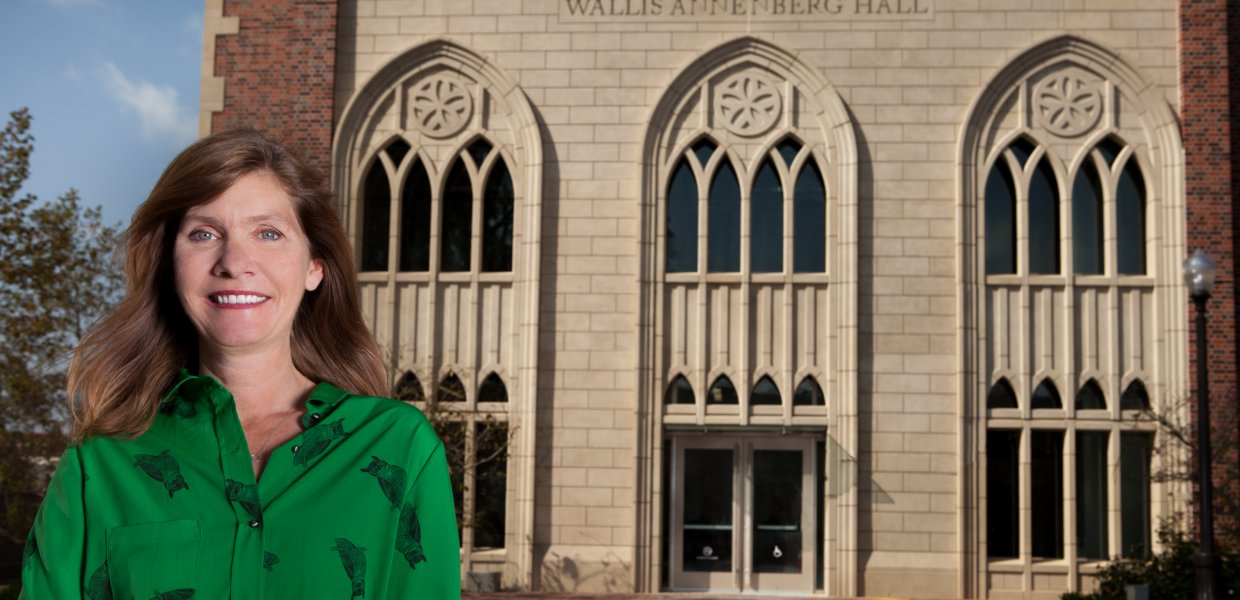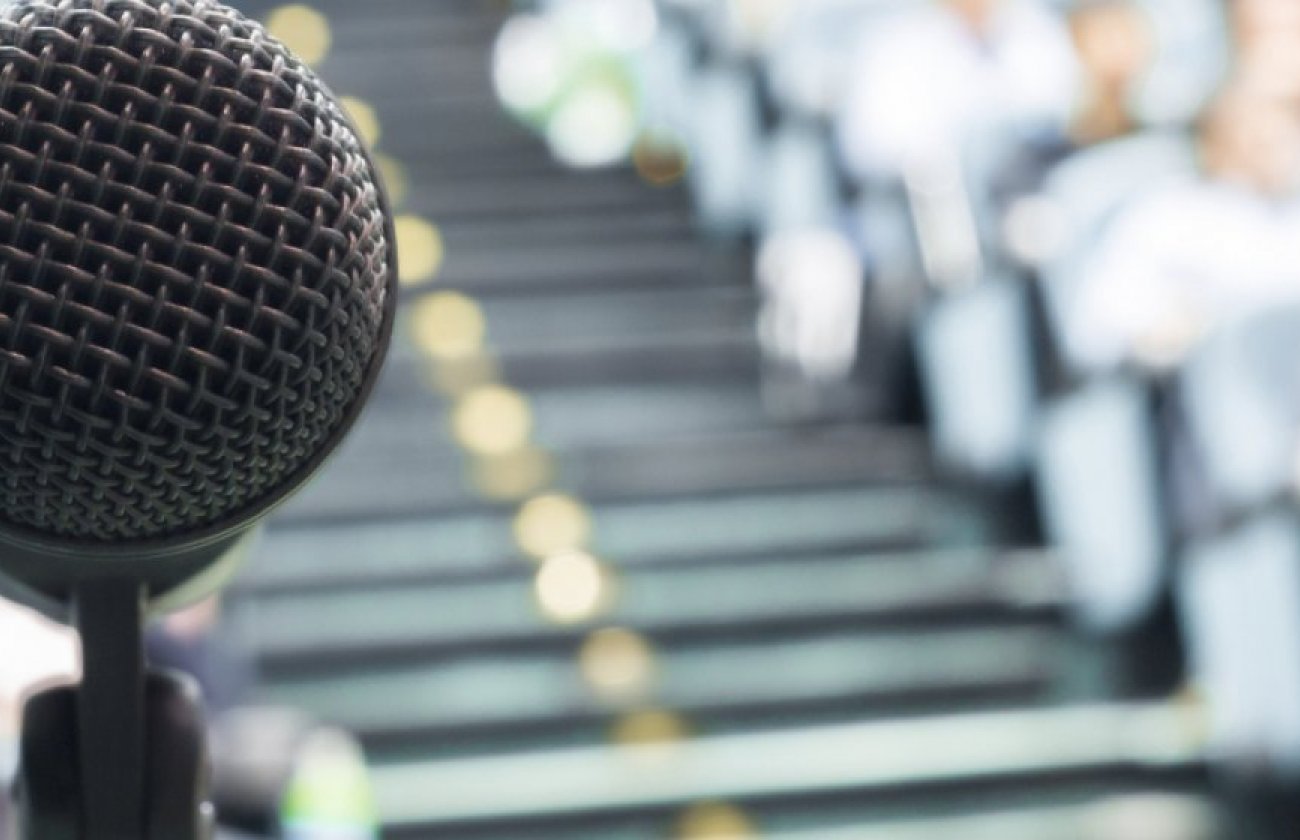When Shepard Fairey decided to pursue a career as an artist and graphic designer, his father told him, “If you really make it, you’ll be able to make the South Carolina duck stamp.” Now having created one of the most iconic images in recent history with his Barack Obama “HOPE” poster, most would agree that Fairey has more than “made it.”
As part of Visions and Voices, the USC Arts and Humanities initiative, Fairey joined communication professor Sarah Banet-Weiser at USC Annenberg to discuss his work and role as a contemporary artist, graphic designer and political and social activist, largely defined by his ability to navigate the landscapes of commerce and consumption that his own work often critiques.
As Banet-Weiser suggested, “There is no one way to describe his art… He is emblematic of a new kind of cultural producer and artist,” producing “art that refuses to be neatly categorized.”
To begin the discussion, Fairey recounted the story of how his career haphazardly took off — and it all began with an inside joke and the image of a wrestler. What started with a few hundred stickers that read “Andre the Giant Has a Posse” stuck onto stop signs and building facades in Providence (where Fairey attended the Rhode Island School of Design) turned into a viral movement that captured the media attention of the Northeast. As Fairey realized at this time, while Americans are inundated with countless advertising images daily, an issue that his work consistently critiques, it is often the unexpected that can force them to reexamine their surroundings.
“There are things that are unique that can reawaken a sense of wonder about one’s environment,” Fairey said. “My sticker was achieving that without having any lofty ambitions.”
With this initial spark, Fairey cultivated these ambitions, and sought to apply the success of this image to disseminate a more focused and intentional political message — a commentary on conformity and the public response to obedience. Taking this same image of Andre the Giant, Fairey assigned the word “OBEY” to his design as the wrestler asked the public to wrestle with the political climate.
“I have some pieces that are really just designed to provoke people to question, and then I have other designs that have a very specific agenda,” Fairey said of his work. “The ‘HOPE’ and ‘PROGRESS’ images for Obama were absolutely sincere. And people call it propaganda, but that has such a sinister connotation. Yes, it was propaganda, but everything is propaganda.”
Thus, Fairey inserted his own work into the realm of propaganda that he simultaneously attempts to expose, much like his aims with capitalist critiques.
“If you accept capitalism as the economic system and you don’t want to just completely overthrow capitalism, you have to find your way in capitalism that lets you achieve what you want to achieve,” Fairey said. “I’m not going to be a victim, but I’m not going to victimize others. I have to keep my ethics aligned with my participation in capitalism.”
Finally, Fairey commented on the issue of public space, specifically as his own canvas and platform for communication. While respecting private space and property, Fairey argues that public space should not be reserved for those who have the means to purchase it in the form of ad space, and also attributes a great deal of power to this space as a stage for political and social commentary.
“Especially before the Internet, this was one of the only spaces that people who wanted to communicate publicly could find for themselves,” Fairey noted, even suggesting that this platform may be more inspiring than online engagement. “It’s very easy to get on the Internet and post blogs or comment, but it does not evoke the same reaction as taking it to the streets.”







